Jon Oldham explained the expansion and renovation of the Peterborough Museum and Archives
The monthly meeting of the PHS in June took place at the Peterborough Museum and Archives, following which Jon Oldham of the PMA explained the history, planning and extent of the new PMA expansion and renovations. The original building, a centennial project of 1967, very soon underwent its first expansion from 1977 to 1979 to provide space for its growing archival collection. By the 1990s even this space was proving inadequate to accommodate acquisitions over the next two decades, including important collections, among which the Roy Studio photographs, the Legion collection, and the Civic Hospital collection. Between 2009 and 2012 the museum undertook several upgrades that improved accessibility, modernized systems, replaced the roof, and renewed the landscaping. By then, the crisis of space, which endangered the conservation of artefacts and documents, could no longer be ignored, and the City approved the recent expansion and renovations. The project involved the renovation of 3000 square feet on the lower level of the existing building, and the construction of a new building with storage and work space of 9000 square feet. The budget was $3.3 million, of which the City provided $2.8 million and Heritage Canada $380,000. The local firms of Lett Architects and Mortlock Construction undertook the work, with p2i Strategies of Milton managing the project. Following his talk Jon Oldham, assisted by Allison Hayes and Susan McBride, led a tour of the stunning new facilities. The City has provided an essential resource for the community, ensuring the preservation and conservation of, and effective access to, the cultural and historical records by which we may all be educated better about our past.
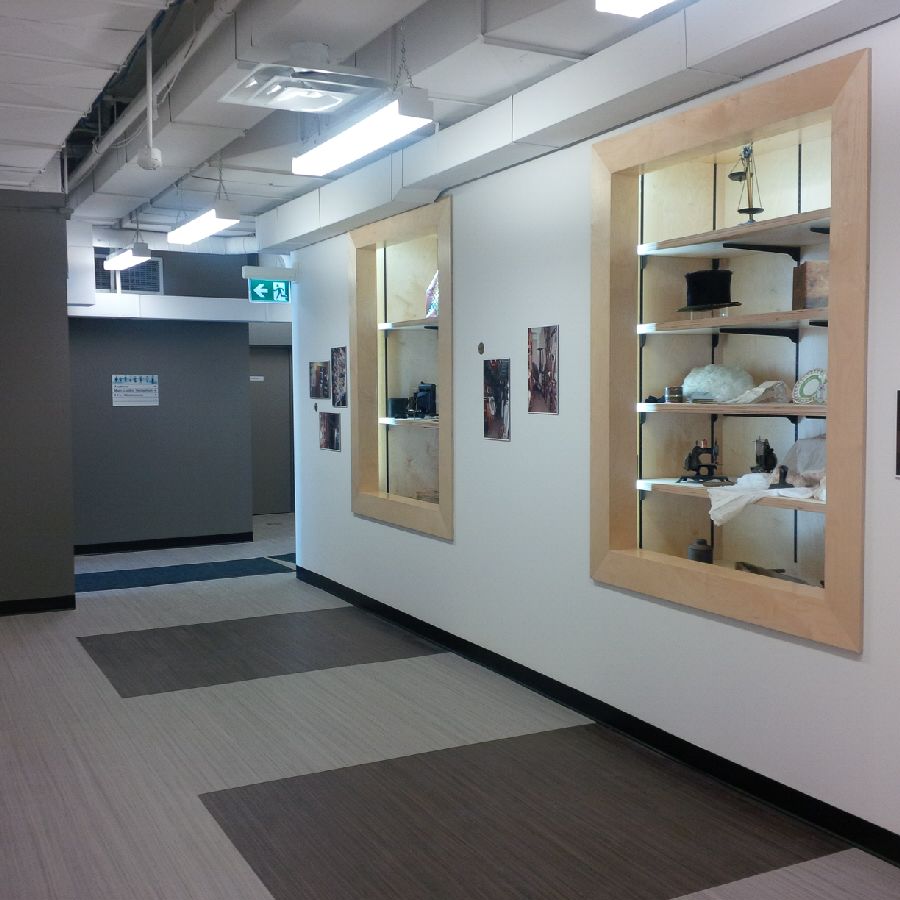
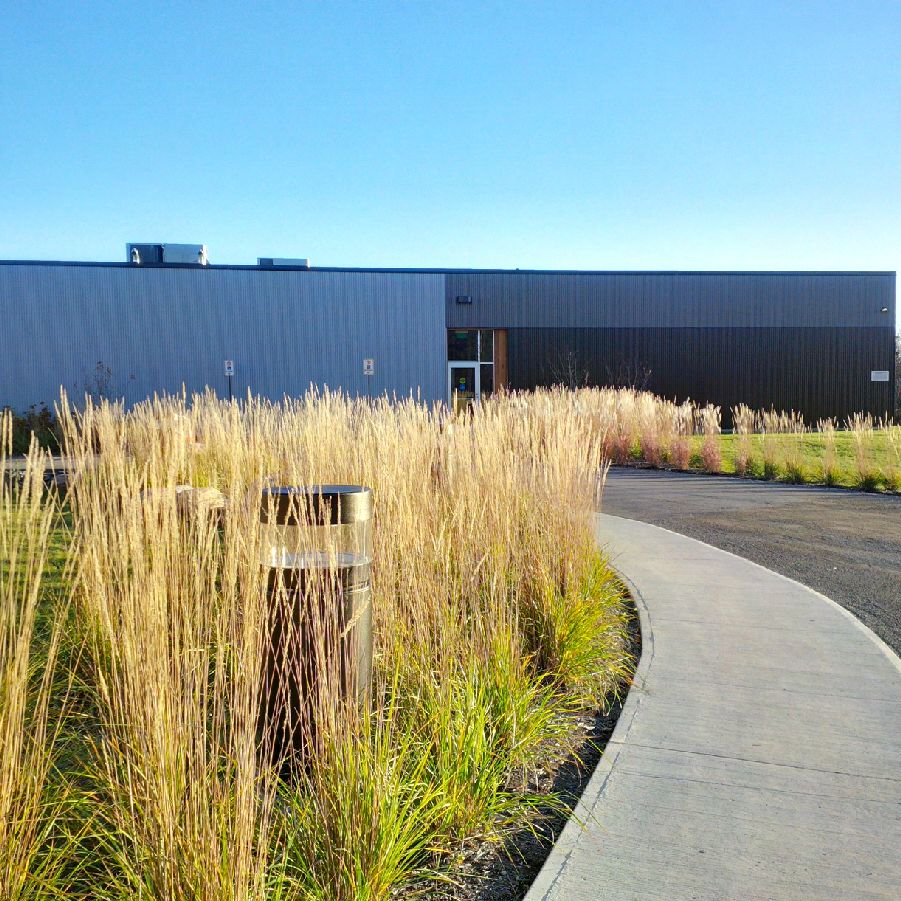
The Fairbairn and related families in Peterborough history
It has been said that a community’s history is merely a collection of individual family histories. This old adage was proven true by the presentation of Blair Mackenzie to the September meeting of the PHS. In tracing his family history, Blair linked two prominent Peterborough families who left a lasting legacy not just in their service to the community, but to street names as well. Robert Fairbairn, born in Scotland in 1789, came to Peterborough via Bowmanville in the 1820s and rose to prominence as post master and justice of the peace. With his wife, Helen, they had 9 children. The eldest son, Thomas, born 1824, married Jane Roger, daughter of the Reverend John Roger, minister at St. Andrew’s Presbyterian Church. A lawyer, he served as a Liberal MLA for Peterborough West but died young at the age of 34. The Rev. John Roger was caught up in the split among Presbyterians and moved to the Free Kirk St. Paul’s. Although a strict, religious minister, Rev. Roger built a stately home, “Cordach,” which the speaker suggested was a copy of a similar property back in Scotland. One child of Rev. Roger, George M., played a prominent role in the Peterborough legal community, serving as a County Court judge. George M . Roger and his law partner were instrumental in developing Juniper Island and the many canoe regattas held there. Their names are commemorated in Fairbairn and Cordach streets, a tangible link to the lives of these notable Peterborough families.
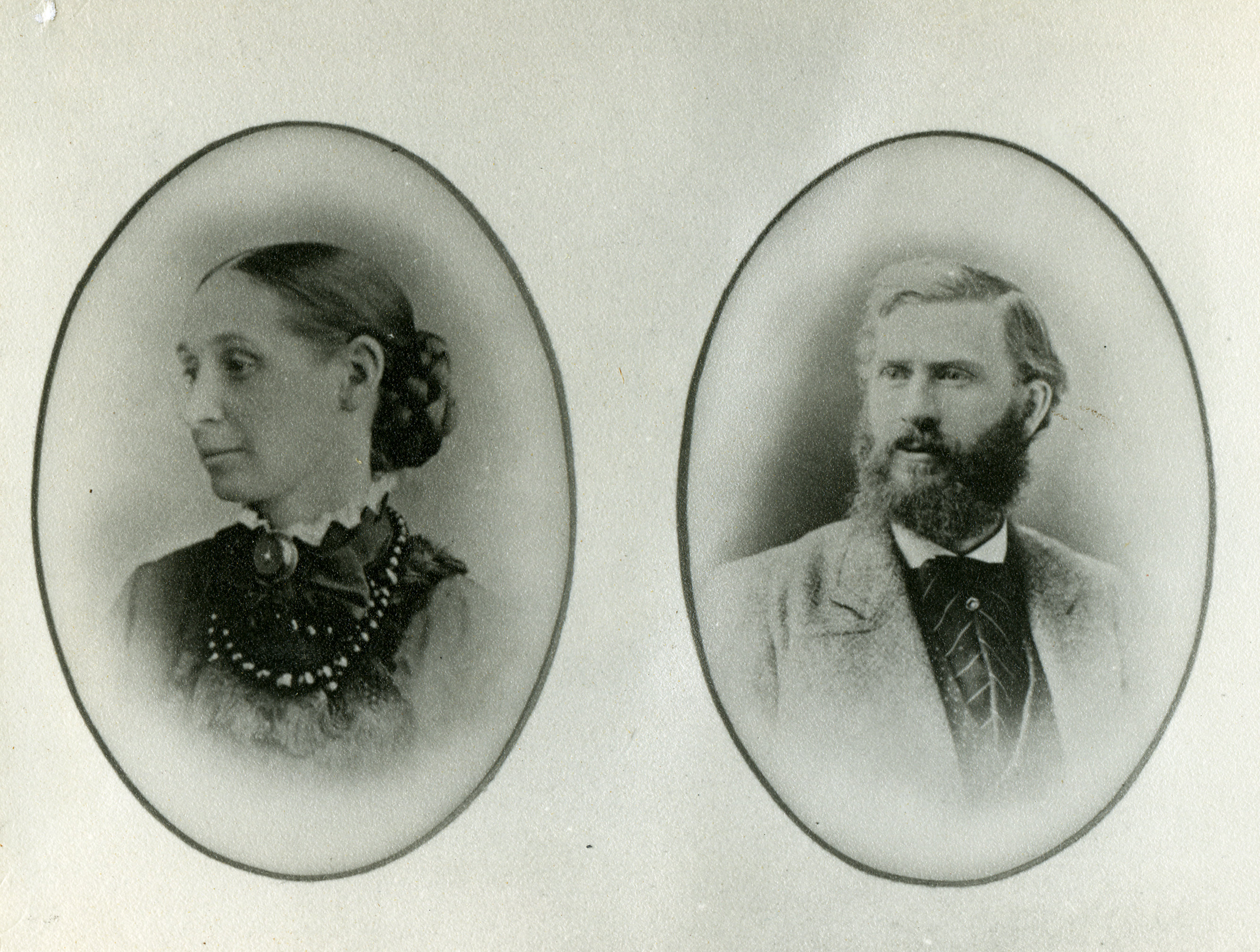
Highlights of the 2016 AGM
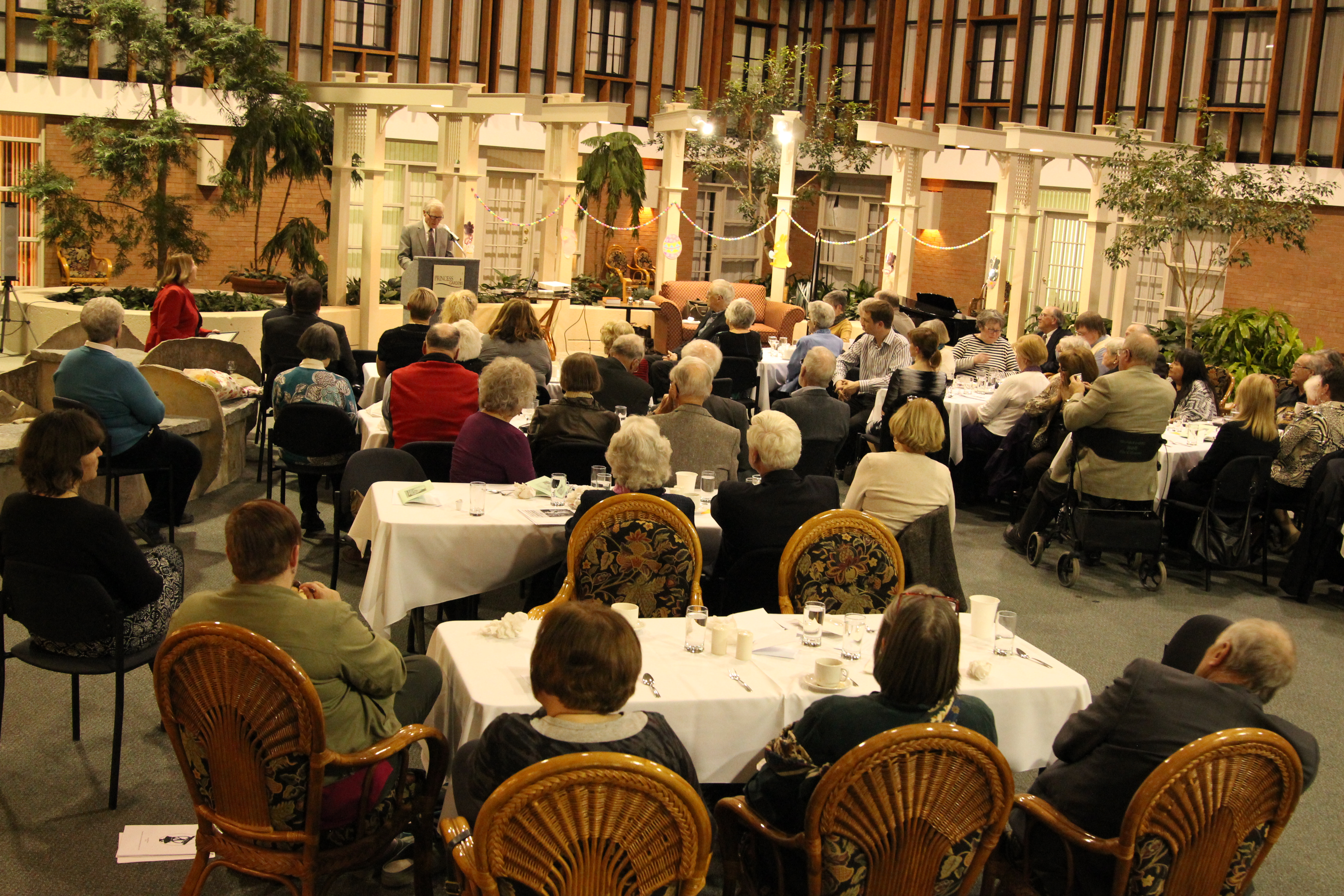
Close to 70 PHS members and guests attended the 2016 AGM and Fundraising Dinner at Princess Gardens. The event generated a profit of over $1,000 for the Society.
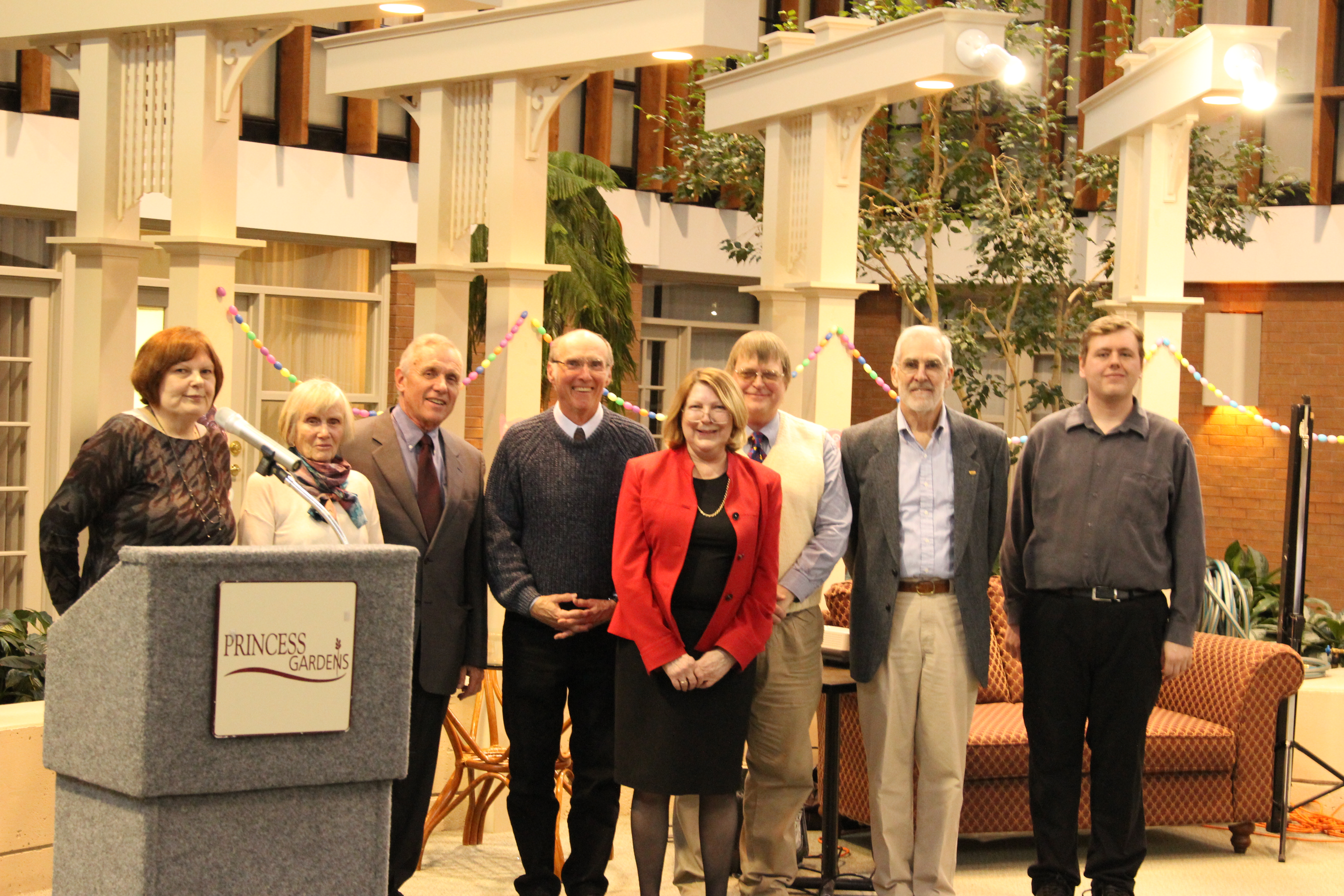
The new Board of Directors was elected: (from left to right) Susan Jewell: Kathy Hooke: Paul Lumsden: Dennis Carter Edwards; Don Willcock; Dale Standen: and Daniel Rainey. Bill Corbett and Peter Darling were absent.
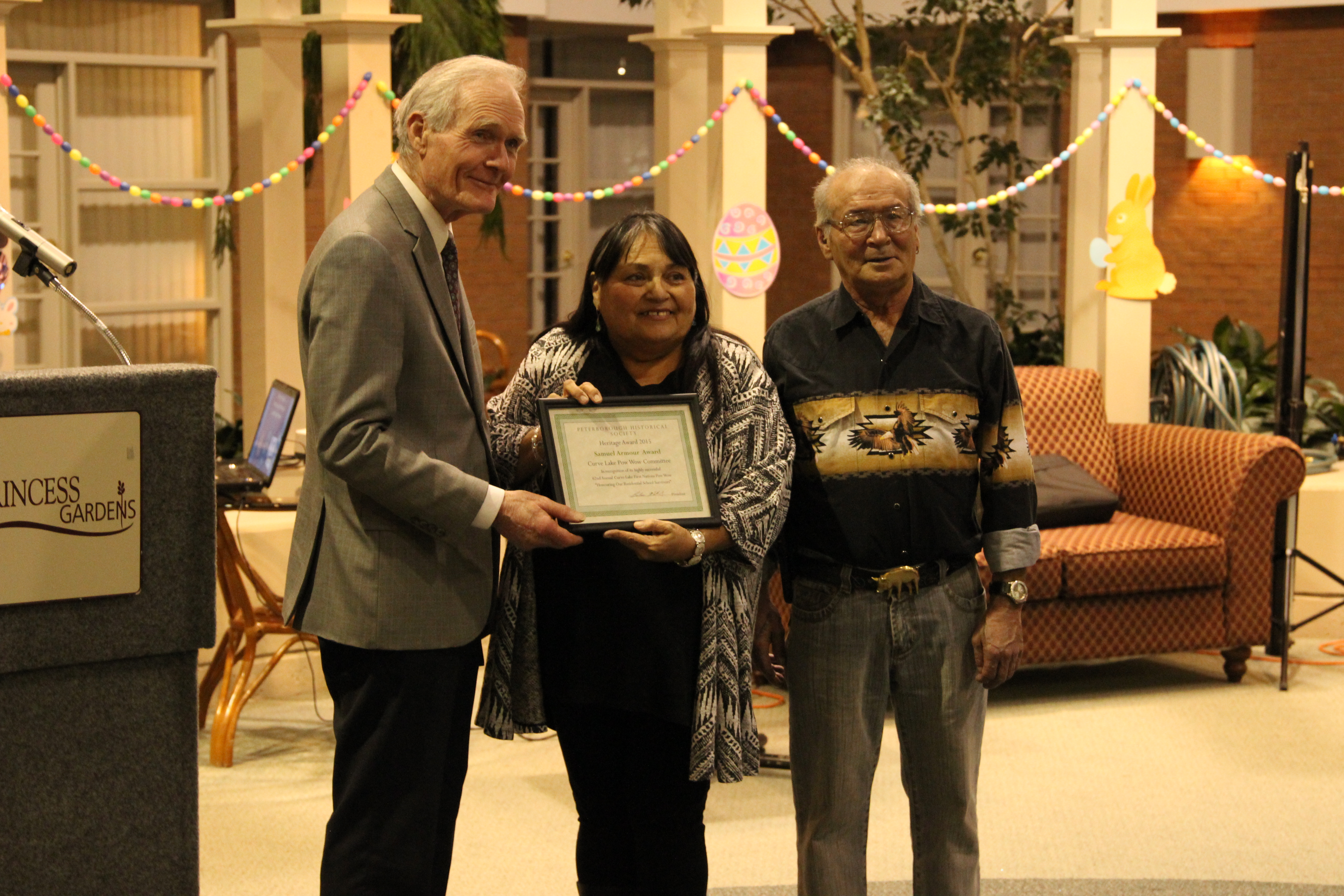
Again this year, TV personality, Graham Harts was the Master of Ceremonies. The Curve Lake Pow Wow Committee received the Samuel Armour Award in recognition of its successful 62nd Annual Curve Lake First Nations Pow Wow held in September 2015.
This event attracted in excess of 7,000 visitors of all ages. Under the theme Honouring Our Residential School Survivors, it brought together Natives and non-Natives in a celebration of ancestors and sacred traditions, with special emphasis on engaging young people in exploring the diverse local history of the region. Councillor Deborah Jacobs and Councillor Arnold Taylor accepted the award on behalf of the Curve Lake Pow Wow Committee.
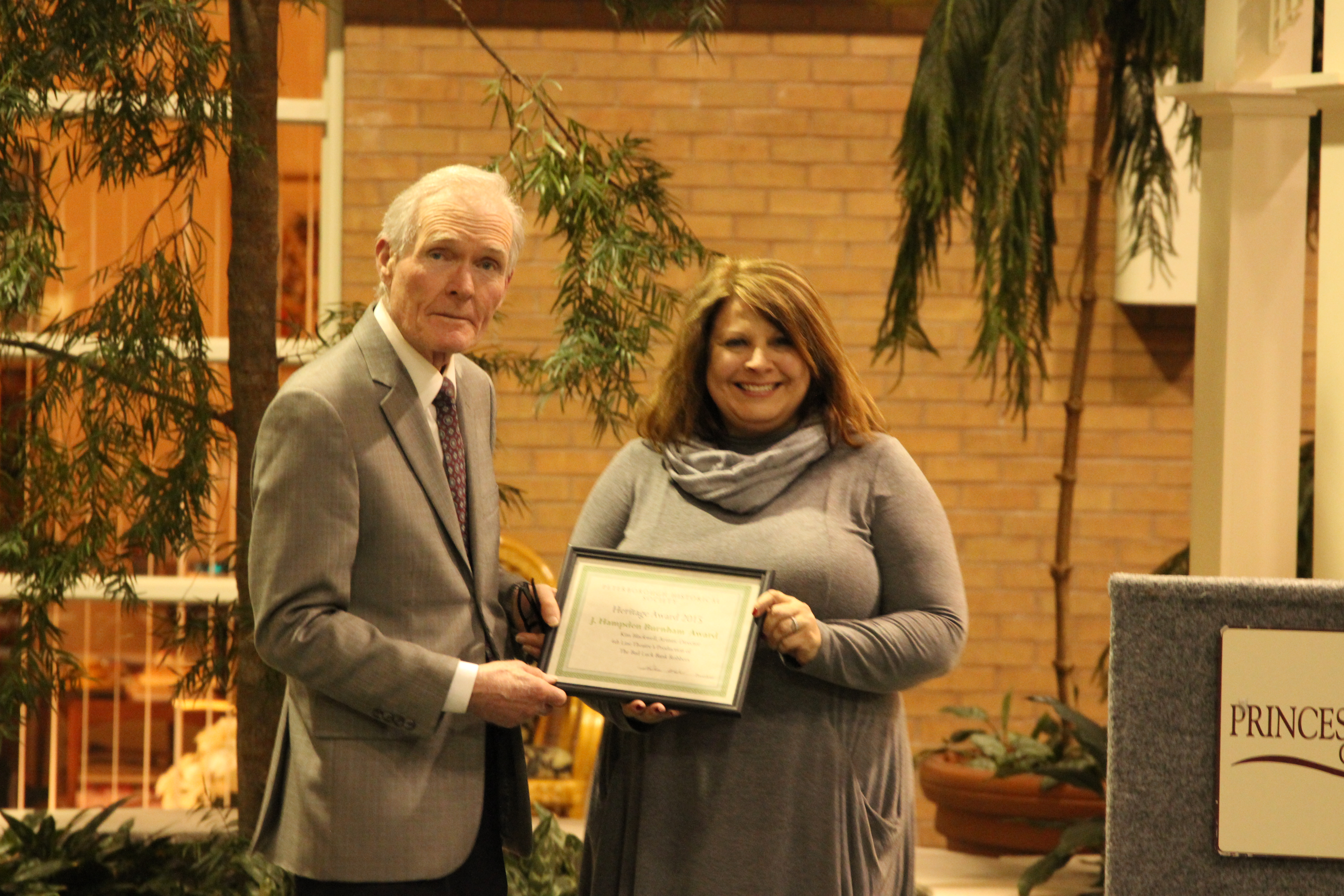
The J. Hampton Burnham Award recognizes the completion of a major project that promotes awareness of local history using any media including the performing and visual arts. This award was presented to Kim Blackwell, Artistic Director of the 4th Line Theatre Production of The Bad Luck Bank Robbers, premiered to a sell-out audience in summer 2015.
The play, based on the book by Grace Barker, tells the story of the 1961 robbery of the Toronto Dominion Bank in Havelock. It was the largest single-day bank robbery in Canadian history with $230,000 stolen and although the robbers were eventually caught and convicted, the money was never found and has never been put into circulation.
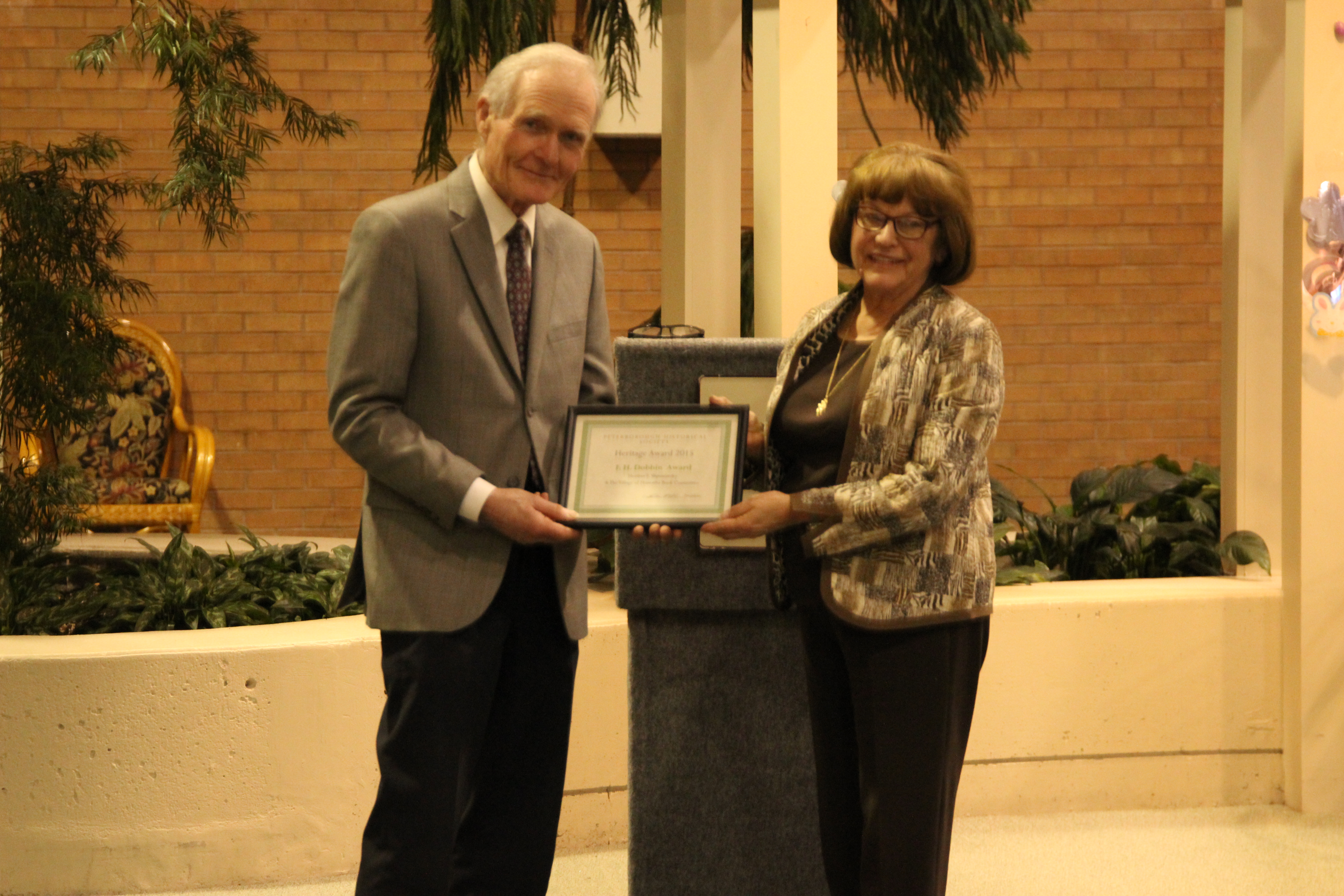
Peterborough author, Heather Shpuniarsky received the F.H. Dobbin Award for her book The Village of Hiawatha: A History, published in 2015. The Village of Hiawatha Book Committee, a group of volunteers who worked for almost four years to compile the comprehensive history of the community and raise the funding for publishing the book.
The history covers the origins of the Mississauga Anishinaabeg people, the settlement of Rice Lake, treaty relationships and growth of the Village of Hiawatha itself. Members of the book committee, Fred and Marlene Ash accepted the award
.jpg)
The Mount Community Centre won the Martha Ann Kidd Award for its outstanding restoration of significant heritage features at the former residence of the Sisters’ of St. Joseph on Monaghan Road.
Since acquiring the property in August 2013, this not-for-profit organization has been raising funds and developing a plan to transform the Mount property to serve a variety of uses that include a mix of market-rent and affordable housing; an intergenerational park; community kitchens and gardens; and space for concerts and special events in the former chapel.
In 2015, volunteers completed major restoration work on both the exterior and interior of the heritage structures. Board Member, Nancy Sharpe, Sister Joan Driscoll and Andi Van Koeverden, Director of Strategic Advancement, accepted the awards on behalf of the organization.
The Rosetta Project – Trapping Ions on Comets Dr. Ray March Keynote Speaker at AGM
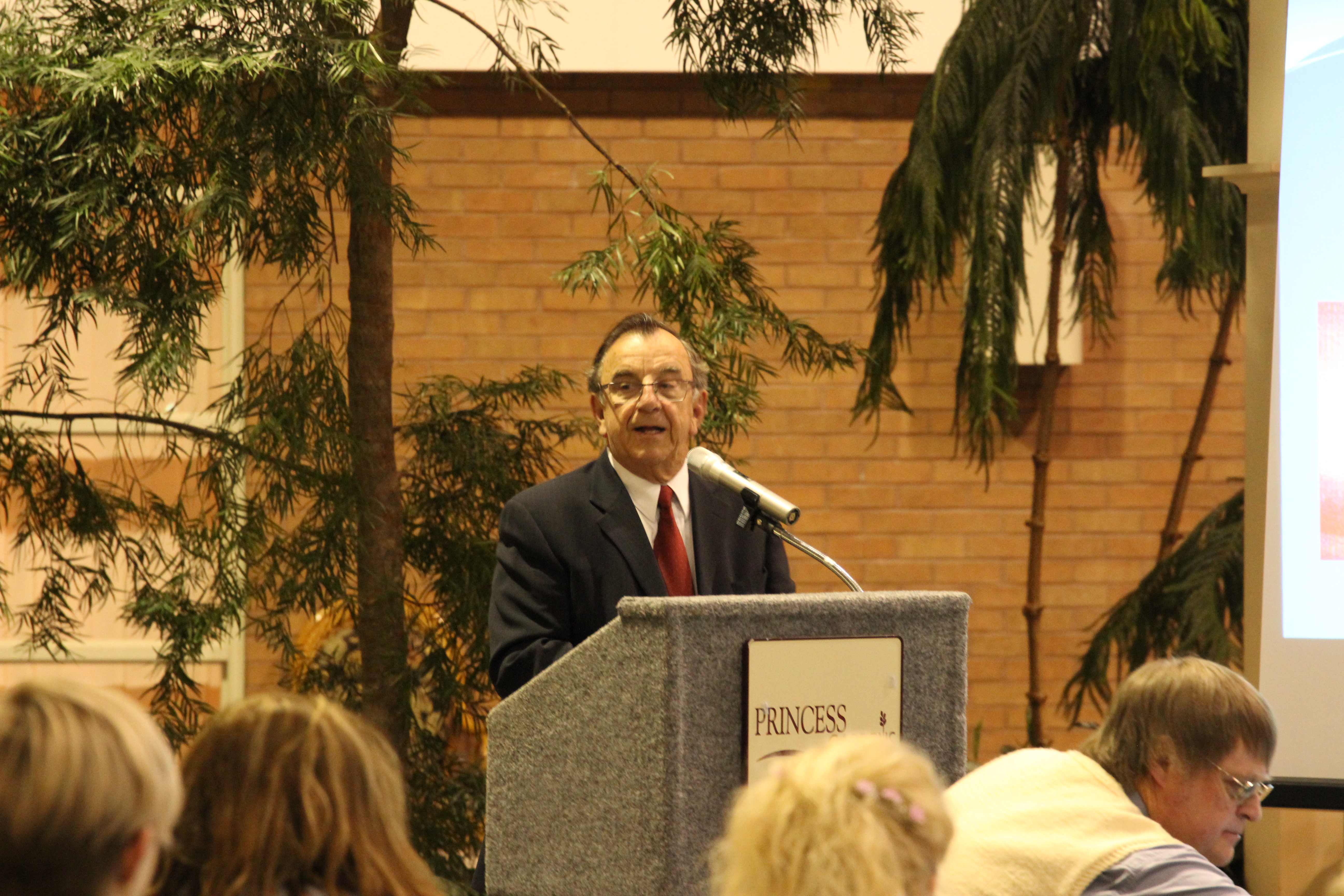
AGM keynote speaker, Dr. Ray March presented an interesting and scientific presentation about the Rosetta Project – a robotic probe that successfully landed on a comet in 2014, after travelling more than 6.4 billion kilometers in space for over 10 years. Dr. March is a professor emeritus at Trent University and although he officially retired in 1999, he continues to stay active in his field of Mass Spectrometry.
Dr. March played a key role in designing Rosetta’s lander Philae, which was deployed from the spacecraft to make the first controlled probe of a comet. This devise has been used to collect data from the comet through a technique called mass spectrometry. The project is ground-breaking and history-in-the-making because it will provide information about the surface of the comet which is believed to be around 4,600 years old and may explain the origins of the solar system. The purpose of the probe was to study stable isotopes on the comet in order to gain a better understanding of how the earth was formed.
After more than 10 years of travel, the probe landed November 12, 2014. Landing was tricky to maneuverer, since it was over 350 million kilometers away and the landing plan had been done 10 years before. The probe did hit a soft piece of ice and slipped sideways but then stabilized. Before the solar batteries died, it was able to send over 80% of its planned scientific data. Each data transmission took about 27 minutes to travel to earth.
The final regular transmission was received November 15, 2015. But it did continue to transmit data intermittently until July 9, 2015. As the comet continues to travel further away from the sun, there is little hope of more transmissions.
Meanwhile the work continues in the lab, which is set up with similar conditions to the comet to test and interpret the data. Stay tuned while the comet may be silent, the information it provided is still educating scientists from around the world, including those at Trent University.
